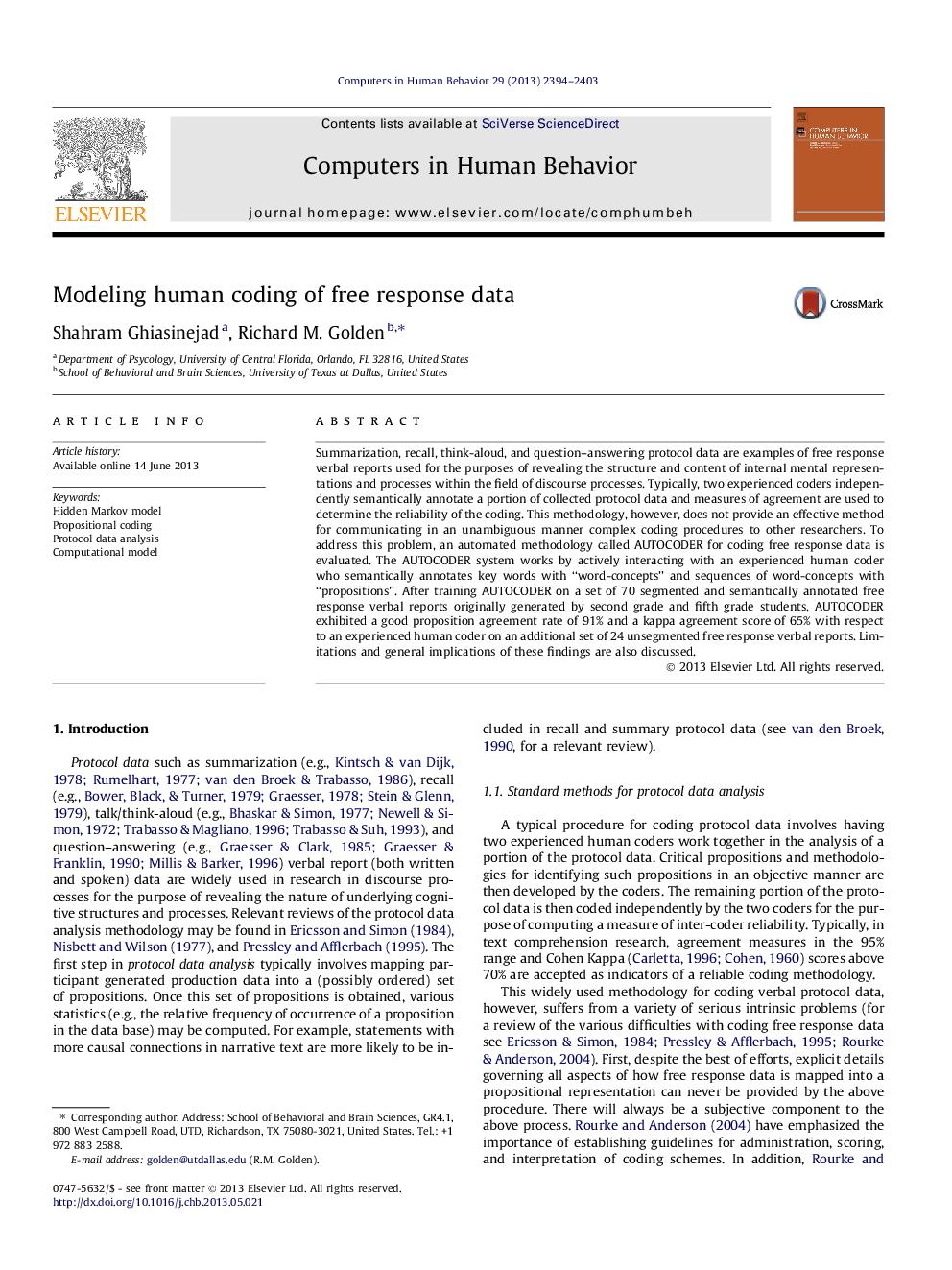| Article ID | Journal | Published Year | Pages | File Type |
|---|---|---|---|---|
| 350832 | Computers in Human Behavior | 2013 | 10 Pages |
•The AUTOCODER system for coding free response data is described and reviewed.•Coding performance of the AUTOCODER system with a human-expert gold-standard.•On test data, AUTOCODER agreement with human-expert gold-standard was acceptable.•Strengths and limitations of AUTOCODER are compared with related methods.
Summarization, recall, think-aloud, and question–answering protocol data are examples of free response verbal reports used for the purposes of revealing the structure and content of internal mental representations and processes within the field of discourse processes. Typically, two experienced coders independently semantically annotate a portion of collected protocol data and measures of agreement are used to determine the reliability of the coding. This methodology, however, does not provide an effective method for communicating in an unambiguous manner complex coding procedures to other researchers. To address this problem, an automated methodology called AUTOCODER for coding free response data is evaluated. The AUTOCODER system works by actively interacting with an experienced human coder who semantically annotates key words with “word-concepts” and sequences of word-concepts with “propositions”. After training AUTOCODER on a set of 70 segmented and semantically annotated free response verbal reports originally generated by second grade and fifth grade students, AUTOCODER exhibited a good proposition agreement rate of 91% and a kappa agreement score of 65% with respect to an experienced human coder on an additional set of 24 unsegmented free response verbal reports. Limitations and general implications of these findings are also discussed.
